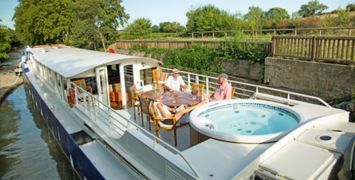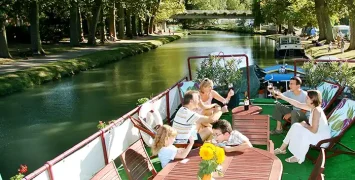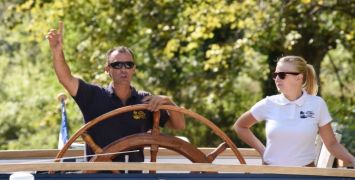The Chapel of Saint Stephen – Minerve (05:15)
The Chapel at Minerve was built in the 11th century in the Early Christian/Romanesque style to replace an older building which was located at the bottom of the hill. It is particularly interesting due to its ancient altar, which is known as the oldest altar still in regular use in Europe. On its facade are inscriptions which date back to 456 AD, but Visigoth markings on its top mean that it probably started life as a pagan altar dating from the early 400s.
The Basilica of Sainte Mary Magdeleine – Vézelay (09:16)
The imposing Roman Basilica of Ste-Madeleine, built with the help of donations from the pilgrims visiting the relics during the 12th and 13th centuries, is perched high above the “eternal hill”. Its abbey suffered a decline, not least during the Religious Wars of the 16th century when it was sacked by the Huguenots in 1569.
By the time of the French Revolution, the building was in danger of collapsing due to neglect, and, in 1834 the inspector of historical monuments again warned of the risk if nothing was done to save it. On his recommendation, Eugene Violelet-le-Duc was appointed to supervise the massive – and successful – restoration of the abbey, undertaken in various stages between 1840 – 1861, during which various weathered and vandalised sculptures were replaced. The flying buttresses which support the nave are another of Viollet-le-Duc’s additions to the design. The interior, with its immense Christ in Glory portal, is today seen as one of the greatest Romanesque works of art in the West.
The Basilica of the Sacred Heart – Paray-le-Monial (16:50)
Built from the 12th century, on the site of a 10th-century monastery founded by Count Lambert of Chalon, the Romanesque Basilica of Paray-le-Monial was designed as a small-scale version of the Abbey of Cluny III. It was completed in the 14th century, although some sections were added in the 18th century and renovated in the 19th century.
The Cathedral of Our Lady – Strasbourg (18:43)
Cathédrale Notre-Dame de Strasbourg is an outstanding masterpiece of Gothic art. The first stone was laid in 1015 and the spire was completed in 1439. Up until the 19th century, the cathedral was the highest building in the whole of the Christian world and is still the highest medieval building in Europe.
The Astronomical Clock is a result of the combined work of artists, mathematicians and technicians. The current mechanism dates from 1842. The main attraction of the clock is its animated figures which come out to delight the public every day at half past noon.
The Chapel of The Trinity – Fontainebleau (32:00)
The Chapel of the Trinity was built originally as a convent by Louis IX in the 13th century and was used by the Order of the Trinitaires (who accompanied him on Crusade). Then, in around 1528 Francis I demolished the old monastery and built the chapel we see today, which was later remodelled in the Renaissance style under the reign of Henry IV.
The chapel is noted for its early use of stucco, putti and ornate frescoes and was one of the first Renaissance churches (chapels) in France. It is still a place of worship and is occasionally used by the President of France on state or official visits and is also a concert venue – with world renowned musicians holding small-scale concerts throughout the summer. The Order of the Trinity are still associated with the chapel, today.
Louis XIII was baptised in the chapel in 1601, the chapel was the setting for the wedding of Louis XV and the Polish Princess Marie Leszczynska in 1725. Napoleon III was baptised there in 1810, and Ferdinand-Philippe d’Orleans (the son of King Louis-Philippe, the last king of France) was married there to Helene de Mecklembourg Schwerin in 1837.
The Church of Saint Stephen – Briare (36:05)
In the centre of the town you can find the interesting Romanesque-Byzantine church dedicated to Saint Stephen, built at the end of the 19th century. The church is particularly remarkable due to its beautiful decorations both inside and outside the building which were provided by the Émaux de Briare. It was added to the list of historic monuments in 1987.
 French
French
 English
English Spanish
Spanish German
German Norwegian
Norwegian Portuguese
Portuguese Swedish
Swedish Italian
Italian Russian
Russian Simplified Chinese
Simplified Chinese Japanese
Japanese


